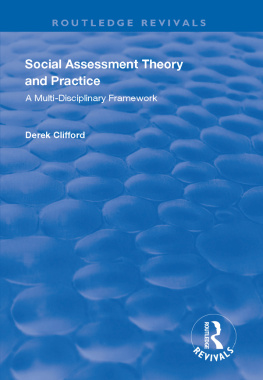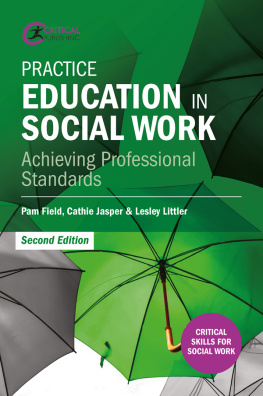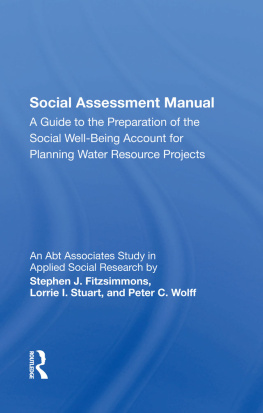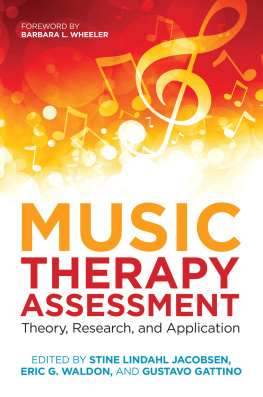First published 1998 by Ashgate Publishing
Reissued 2018 by Routledge
2 Park Square, Milton Park, Abingdon, Oxon, 0X14 4RN
711 Third Avenue, New York, NY 10017, USA
Routledge is an imprint of the Taylor & Francis Group, an informa business
Copyright Derek Clifford 1998
All rights reserved. No part of this book may be reprinted or reproduced or utilised in any form or by any electronic, mechanical, or other means, now known or hereafter invented, including photocopying and recording, or in any information storage or retrieval system, without permission in writing from the publishers.
Notice:
Product or corporate names may be trademarks or registered trademarks, and are used only for identification and explanation without intent to infringe.
Publishers Note
The publisher has gone to great lengths to ensure the quality of this reprint but points out that some imperfections in the original copies may be apparent.
Disclaimer
The publisher has made every effort to trace copyright holders and welcomes correspondence from those they have been unable to contact.
A Library of Congress record exists under LC control number: 98022998
ISBN 13: 978-1-138-34299-6 (hbk)
ISBN 13: 978-1-138-34300-9 (pbk)
ISBN 13: 978-0-429-43946-9 (ebk)
This book has two closely connected objectives. The first aim is to present a framework of concepts in order to create a competent theoretical basis for social assessment - a common task in a number of professions in health, social welfare, law and education, and a vitally important area in which the differing professions need to gain some common understanding. The second is to explore the practical use of these concepts in differing contexts where various professions - social workers and various kinds of care staff; psychologists; nursing staff; general practitioners and various medical staff, including psychiatrists, paediatricians and geriatricians; teachers; lawyers; probation officers, and the police - are supposed to be working together, but are frequently exposed as divided in their understanding. This means the development of a methodology capable of providing a useful guiding framework for the various complex practical issues involved, but one which is also responsive to the theory generated by practice itself.
The first part of the book will draw on social theory and social research methodology, bearing in mind the need to relate this to a very wide range of micro-social situations where individual people, their lives and social relationships are studied. It will draw on a range of relevant academic and applied disciplines, principally in the social sciences, and will therefore be multi-disciplinary in orientation, but firmly centred on the social.
The second part of the book will show how the conceptual framework applies in specific areas of professional practice where individuals from various user groups are assessed, including children and young people, older people, disabled people, and people in mental distress. This part will focus on the kinds of methods and practices towards which the various groups of people involved should be working, and will thus be multiprofessional in its implications, but will focus particularly on those responsible for making social assessments - principally social workers.
However, it should not be assumed that there is a simple one-way flow from theory to practice. On the contrary, sound practice in social assessment can be seen as being theorised in Part One. There is therefore a deliberate effort to draw upon the experience of social assessment - from my own practice and observation of others at work (see Autobiographical notes and acknowledgements below), from research I have conducted into social assessment practice with a colleague (Clifford and Cropper, 1994; 1997a and 1997b), and from good practice as it is described in the literature.
The proposed framework for social assessment has particular reference to assessments done by social workers. However, the concept of social assessment is also relevant in many professional areas, either as part of their own discourse, or in formal consultation or in team discussion with others. For example, in the legal system, formal and informal social assessment is carried on all the time, principally by probation officers, but also by the police, magistrates, solicitors and barristers in the course of their work. They may either refer to formal social assessments, or may construct their own informal social assessments in the course of their evaluation of evidence, investigation or sentencing. In education also, the social assessment of children is carried out informally all the time as a part of teachers attempts to understand and contextualise childrens progress. But that becomes even more important for teachers with pastoral or home liason duties, and especially for teachers with special responsibility in relation to child abuse.
In health and social welfare, there is a similar pattern to the division of labour. Although social workers have the prime responsibility for a social assessment, health workers, from nurses to consultants, all make informal social assessments of their patients, whatever their speciality. They may also have need to refer to an official social assessment, especially where a patient is being discharged, or to understand the background to the development of illness or disease. However, some health care professionals obviously make assessments which overlap a great deal with social assessments, for instance health visitors, GPs and paediatricians dealing with child abuse cases; community psychiatric nurses, and psychiatric consultants.
The book sets out a theoretical framework which explains and justifies social assessment as a principled and disciplined activity, drawing on the social sciences, especially the disciplines of sociology, history and psychology. This means it is multi-disciplinary in construction and multiprofessional in orientation, aiming to inform other professions while drawing on good practice by those most involved with social assessment, offering a supportive but challenging theoretical base from which to work. The emphasis is upon social assessment, as distinct from other kinds of assessment, and my contention is that the theory applies to any social assessment for any user group in any setting or context. The latter are innumerable, but the areas of practice covered in Part Two will provide a basis for guiding assessment practice and theory in almost any setting, even if it is not specifically represented here. Two important settings involving specific kinds of service user groups not discussed in Part Two can be used as examples.
The areas of probation and youth justice are not discussed in Part Two. This is partly because they are not areas of which I have great knowledge. However, having had some involvement in youth justice, and also having supervised students on placement in such settings, and having read some of the literature on assessment in both these areas, my judgement would be that the general issues of social assessment that arise are not in principle different. Particular issues, and the details of application are certainly significantly different, and the practitioners and others who work in these areas deserve respect for their efforts to develop social assessments in the face of scepticism or reserve from professions with more power and status (Beattie, 1997; Kemshall, 1996 and 1997; Johnstone, 1997; McEwan and Sullivan, 1996; Williams, 1997). Nevertheless, the general principles of social assessment as set out in Part One apply to youth justice and probation in the same basic respects as to all other areas of social assessment. Much of the discussion of practice set out in Part Two is also highly relevant, especially .






